Did you know that we keep detailed records on all of our cattle? You are probably wondering what type of records would need to be kept on cattle? We use our records as a daily management tool to help us run a productive operation. There are many different options for cattle record keeping. Some ranchers use paper based records, others use Excel and/or online cattle management program, such as CattleMax. Similarly, some ranchers keep more details records than others.
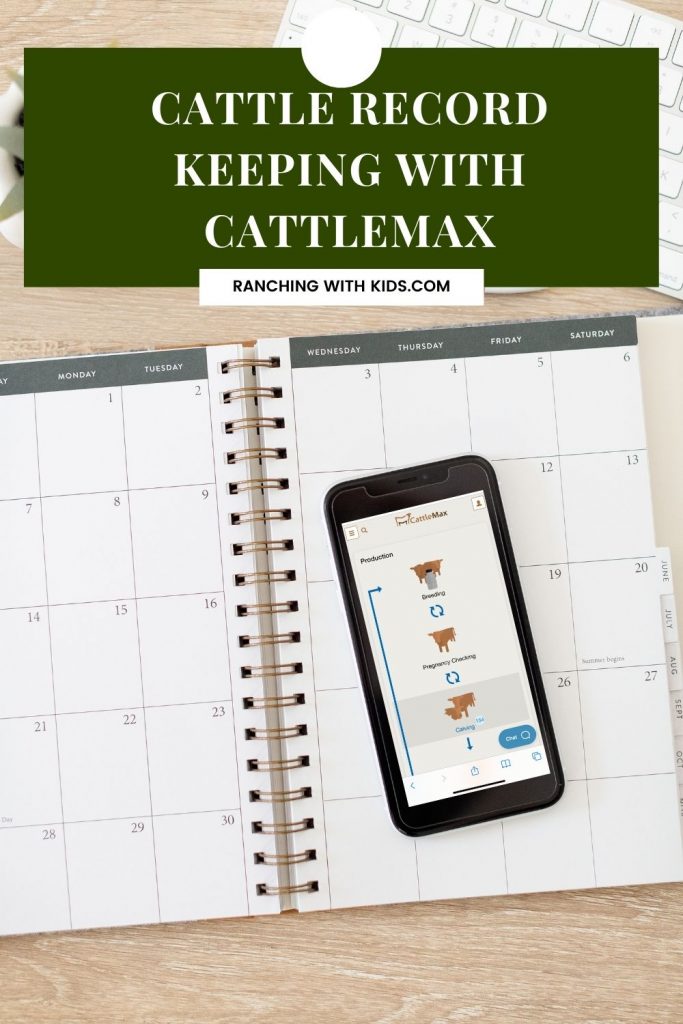
Record Keeping History
My passion for cattle record keeping started very early in life. My grandfather always encouraged me to have an active role on the ranch, from doing chores, prepping bulls for sales, working on cattle records and even helping chose herdsires. From a young age, I helped my mom with the cattle records and I worked at transferring all of our paper records onto a computer into Excel. I will never forget my grandfather smile when he would tell our customers that his granddaughter made the spreadsheet for the sale bulls. My grandfather’s openness to new ideas is one of the reasons our ranch is now using an online cattle management software program. He encouraged to try new technology and advance our operation as we saw an opportunity.
CattleMax
Now on our operation, all of our records are inputted on a daily basis into our cattle management software program, CattleMax. CattleMax has an online program that we can access anywhere by using our computer, iPhones and/or iPads for a small monthly fee. We have been using this program for over 10 years and it makes it extremely easy to print reports and/or worksheets while managing our herd.
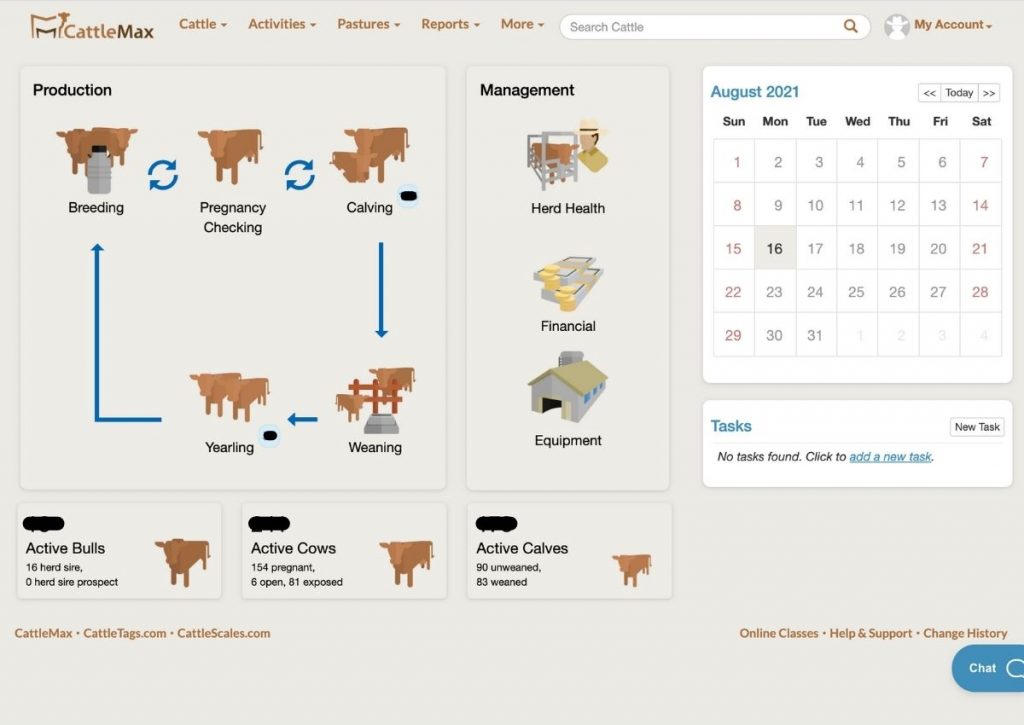
There is a purebred and a commercial version option in CattleMax. On our ranch, we have a purebred and commercial herd. Since with purebred herds there is always more of a record keeping requirement, we decided to also keep detailed records on our commercial herd so that we are managing all of our cattle in the same way. There are very easy to read lists of all the cattle, including by groups.
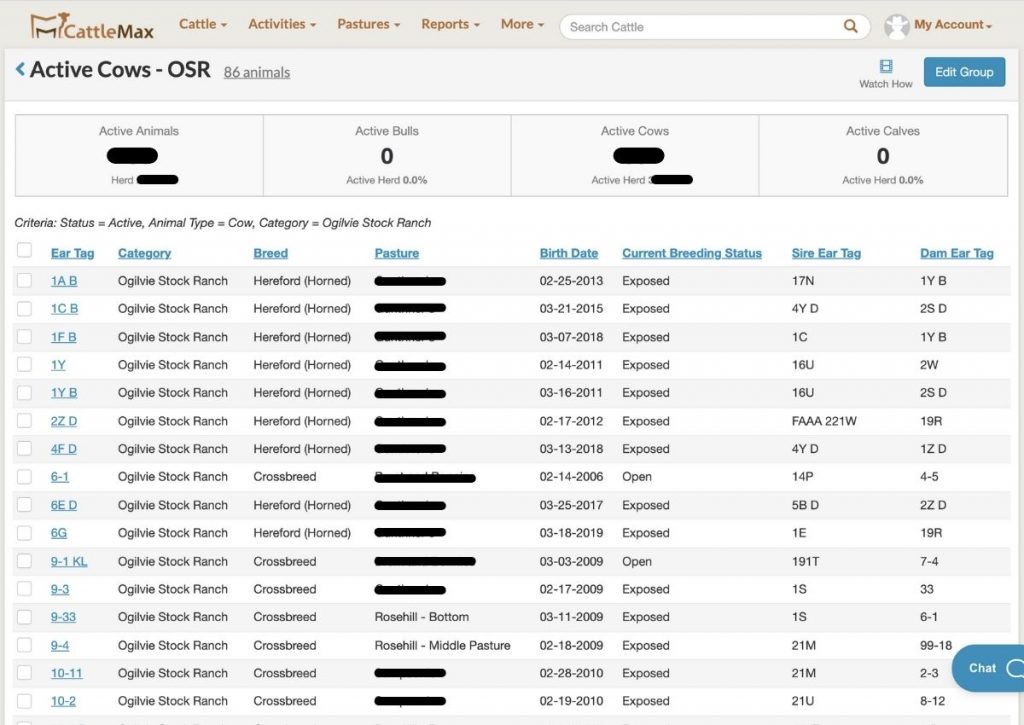
Cattle Tags
On our ranch, every calf is given a Richie tag with a specific number at birth along with a RFID tag (Radio Frequency Identification tag). The mother’s number is then engraved on the top of the Richie tag. The registered calves are numbered numerically, followed by the letter for the year. This year is “J”. The commercial calves are also numbered numerically, starting with the year they were born (“21” for 2021) and then their number in sequence. For example, 21-15.
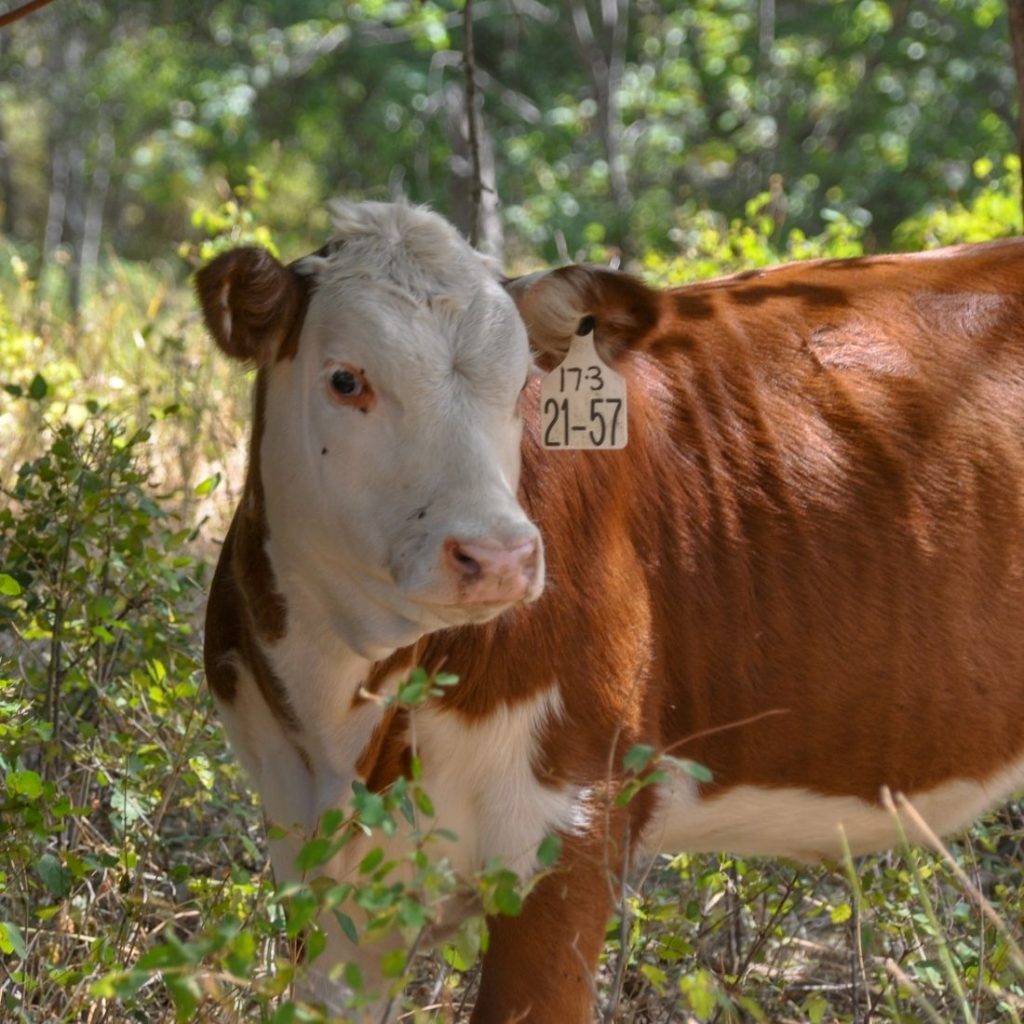
Our Records
At birth, we keep track of calving difficulties, medications, management notes and birth weights. The one book on the ranch that we can’t live without is our calf book! It tracks the calf number, mother (dam), father (sire) and all the other birth details. Needless to say, my 2021 calf book looks like it has been everywhere with me! The information in my calf book is transferred daily into CattleMax. Each calf is added to its corresponding dam, so that they are linked in the program.
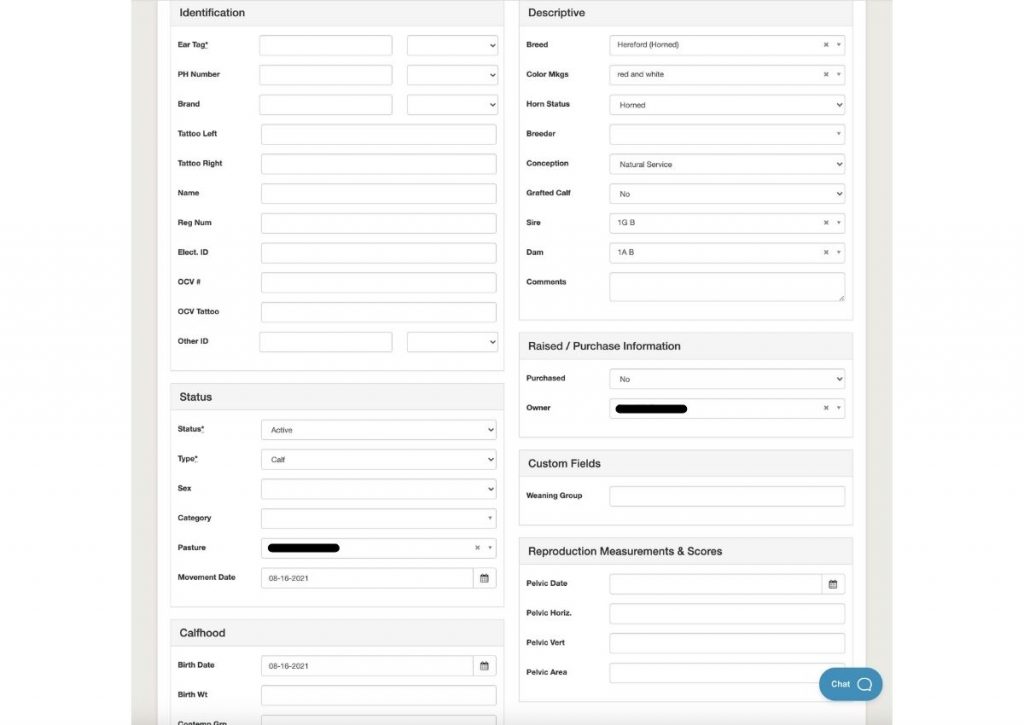
Animals can be easily added individually, by bulk add or by breed association import. Each animal can then be viewed individually in detail.
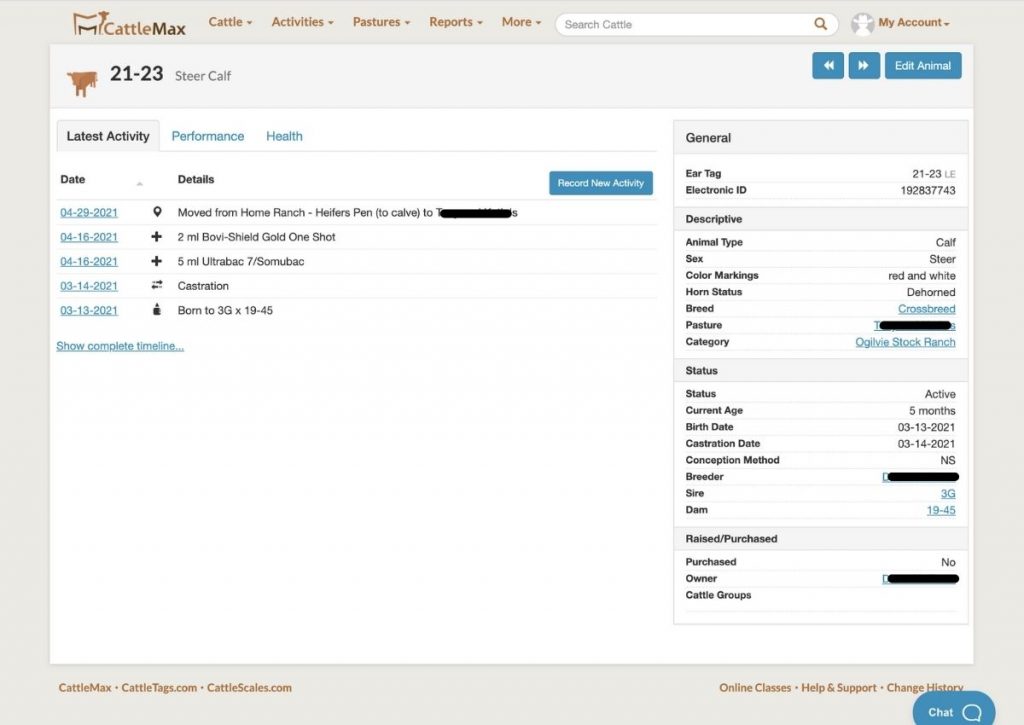
Throughout the year, we must document which cows are bred to which bulls, vaccination and medications as given, pasture movement details for each animal, yearling weights and many other details. During the summer, we use the pasture lists on a regular basis.
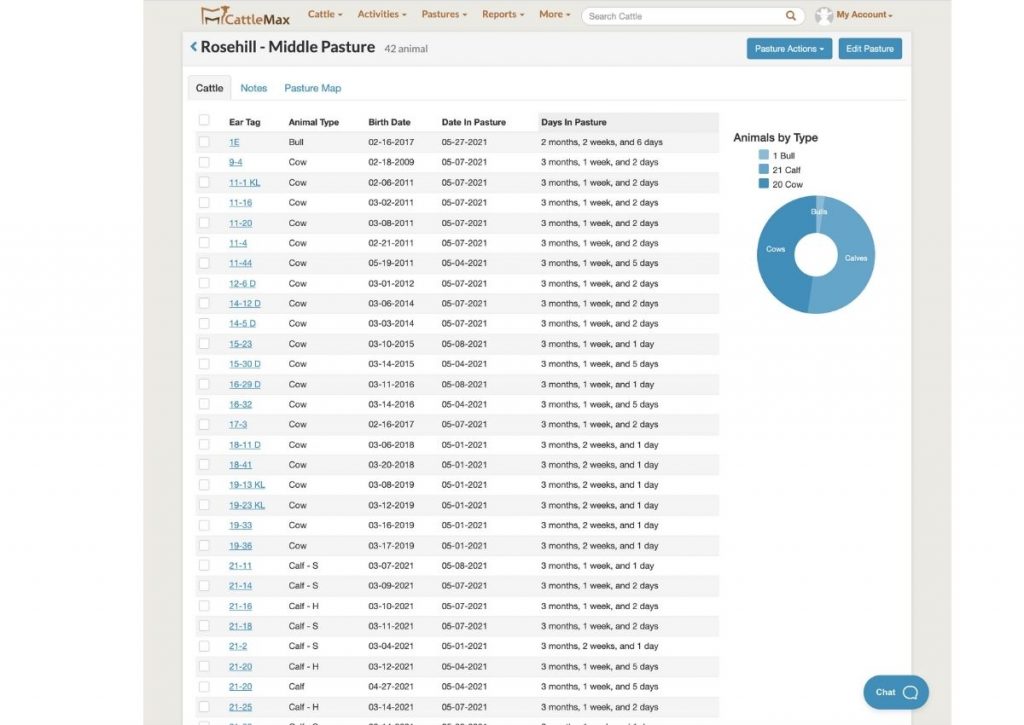
In the fall, we weigh each calf so that we can document how many pounds each cow is raising, details on if the calf is kept over the winter or where it is sold.
Worksheets and Reporting
There are lots of reports and worksheets available in CattleMax that we use regularly.

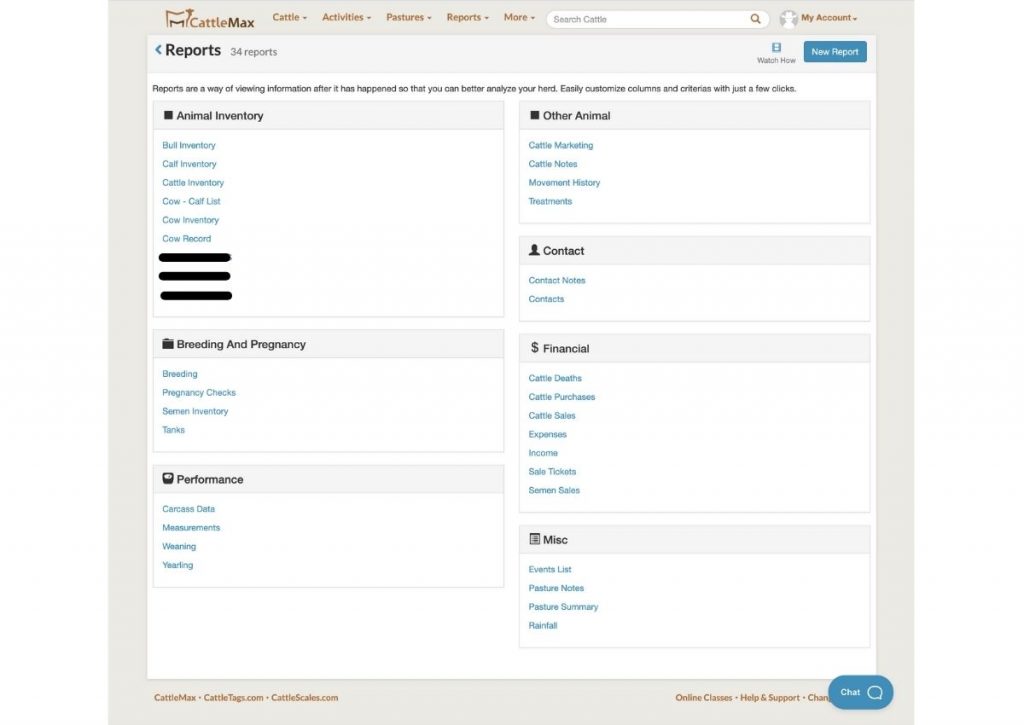
The worksheets and reports can also be customized to your operation needs.
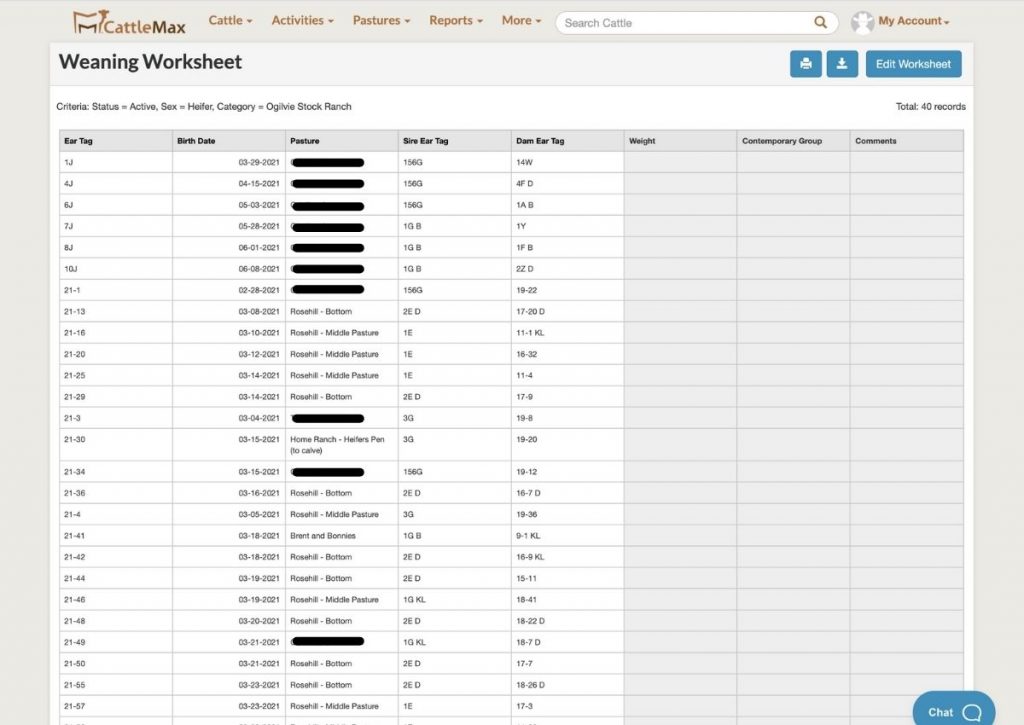
There is also lots of great online training videos on how to use CattleMax and maximize all its features. It can be used accessible anywhere, on any devise and used by multiple users so that everyone on the ranch can help with the record keeping.
By using CattleMax, we can easily see which cows are producing the highest weaning weight, the average calving interval, average birth weights for sires and any other detail that we need to look at while making management decisions.
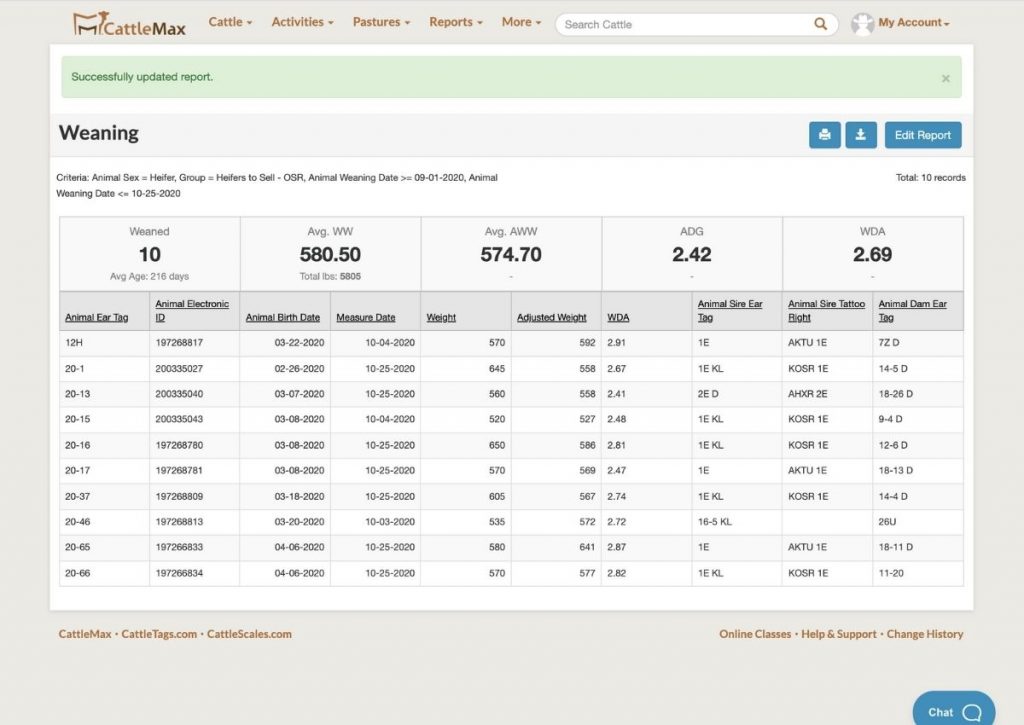
Yearly Record Keeping
At the end of each year, we print a variety of reports and bind them into a book so that we always have a paper copy of each year’s records to refer to.
Now that we have been using CattleMax in our operation, I couldn’t imagine doing all the records manually now. I highly recommend CattleMax for cattle ranchers as a convenient, easy to use management tool to help with decision making on the ranch.


